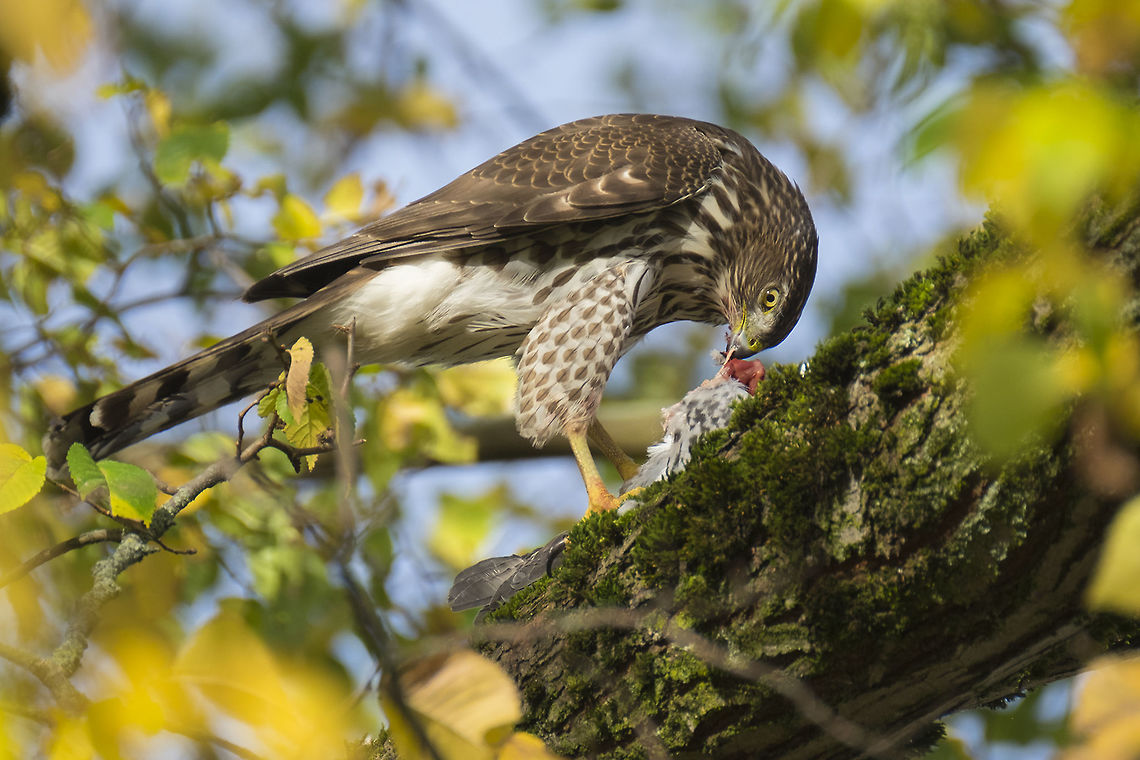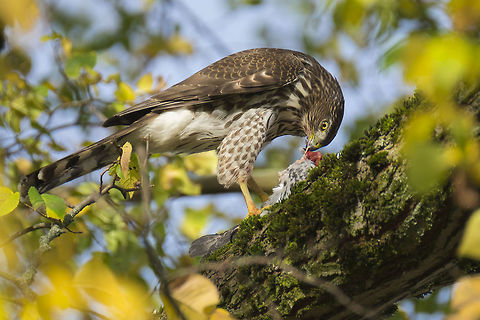 Promoted
Promoted
Juvenile Cooper's hawk
Enjoying a meal of pigeon in a tree near my home. It's quite small for a hawk. It looks to be not even twice the size of the pigeon that it's caught. Differentiated from a juvenile sharp shinned hawk by the brighter streaking and barring on the chest, thicker feet and legs and tail feathers of differing lengths.

Cooper's hawk is a medium-sized hawk native to the North American continent and found from southern Canada to Mexico. This species is a member of the genus "Accipiter", sometimes referred to as true hawks, which are famously agile, relatively small hawks common to wooded habitats around the world and also the most diverse of all diurnal raptor genera.

comments (7)
"The Cooper's Hawk (Accipiter cooperii) is a bird of prey with a range that extends from southern Canada to northern Mexico. It has a slate back and a reddish-brown-streaked chest. It additionally has short rounded wings, a long tail, and a wingspan of 62-90 cm. Its body is adapted for quick navigation through the underbrush and crowded tangle of dense forests. It is here that the Cooper's Hawk ambushes small birds, amphibians, reptiles, and mammals. Additionally, this species exhibits reversed sexual dimorphism, with females being around 1/3 larger than males.
Cooper's Hawks were initially referred to as "Chicken Hawks" by early American colonists as they had a habit of snatching up poultry from farmsteads. As a result, this species came under heavy fire for the years leading up through the early 1950s. To add insult to injury, heavy usage of DDT in the 1940s and 1950, extensive logging operations, and human development led populations to even further decline. In 1980, it was listed as a threatened species in Wisconsin, and it was thought to be on track for extinction. However, this tenacious bird had no intention of going down the path to obsolescence. With its habitat dwindling, the Cooper's Hawk turned its eye on areas inhabited by humans-- and found that cityscapes could also provide a suitable hunting ground. Small birds attracted to bird feeders became easy pickings for the Cooper's Hawk. It is also thought that the plethora of pigeons, starlings, doves, and sparrows found within cities has allowed the once-threatened hawk to replenish its populations. {Spotted in Washington, USA by JungleDragon moderator, morpheme} #JungleDragon " Posted 7 years ago, modified 7 years ago